Suzuki Swift 2011 News

New Suzuki Swift appears online
Read the article
By Malcolm Flynn · 18 Jun 2013
A refreshed version of Suzuki’s Swift has appeared online, courtesy of the company’s Belgian website.Sporting a new front fascia with LED daytime running lights for the first time, a fresh wheel design, and side markers relocated to the door mirrors, the new Belgian model’s rear styling is unchanged from the model currently available in Australia.Australian Swifts switched from Japanese production to Thailand earlier this year, which brought several spec changes to the FZ model that has been available locally since early 2011.These styling revisions seen on the Belgian model will likely make their way onto local Swifts come mid-cycle refresh time, which will be due in the coming years.Don't hold your breath though, as Suzuki Australia spokesman Andrew Ellis confirmed with Carsguide that the revised model "is for European-spec only at this stage," and “we'll be staying with (the upgraded Thai-built model) for a while yet.”This reporter is on Twitter: @Mal_Flynn
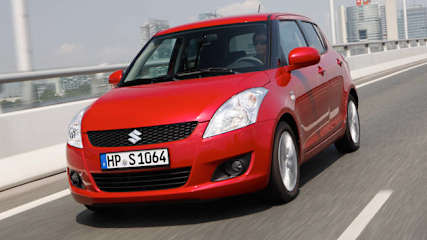
Suzuki Swifts recalled for defect
Read the article
By CarsGuide team · 08 May 2012
The cars were produced between September 2010 and last month, with 55,146 shipped to the domestic market and 53,801 others that were exported to countries including to Australia, Mexico, and Europe.Suzuki said that an inadequate connection on the rubber fuel filler hose could cause petrol to leak. Four cases of such leakage have been reported in Japan, but they did not lead to any accidents, the statement revealed."There have been no reports of such defects abroad,'' the spokesman added. "About the exported cars, we will deal with them in keeping with local procedures of the countries concerned.''In March, Suzuki recalled about 93,000 Swifts, including 11,000 in Australia, to repair the fuel filling system.
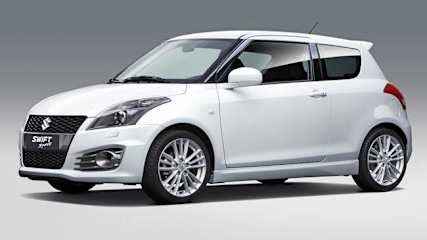
Suzuki Swift Sport ready to go
Read the article
By Karla Pincott · 11 Aug 2011
The production version will star for the brand at Frankfurt Motor Show in September.
Drawing styling cues from the Suzuki Swift S Concept from which it was based, the new Swift Sport is the first full model change since its original launch in 2006. It features more aggressive styling with a low-slung body and oversized grille.
Suzuki promises both power and good fuel economy from the 1.6-litre engine, which is mated to a six-speed manual transmission -- both developed exclusively for the Swift Sport.
The new Swift Sport "offers superior cornering stability and responsive handling thanks to struts with internal rebound springs and an exclusive rear-suspension design", Suzuki says. Like the standard Swift, the Sport's safety is helped by a light, stiff, impact-absorbing body plus seven airbags (including a driver’s knee airbag) and ESC.
“We are very excited about the preliminary release of the new Swift Sport, but we are still some way off finalising the Australian version,” said Suzuki Australian General Manager Tony Devers.
“The Swift Sport will not go on sale here until next year, so we still have some time to work through the specification level suitable for the Australian market. What we do know is the Swift Sport will offer better performance, handling, economy and style than ever before. We can’t wait to launch the ultimate pocket rocket to our customers.”
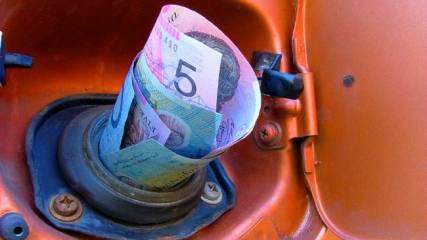
Beat the bowser
Read the article
By Mark Hinchliffe · 19 May 2011
And each week it seems the fuel price sign goes up faster than a politician's pay packet. Australians use a vast amount of fuel in going about their daily business, be it getting the kids to school, travelling to and from work, or conducting the nation's business.Each year we import an ocean of petrol, diesel and LPG that's equivalent to 63,000 Olympic swimming pools. And we're not alone, as the vast populations of newly mobile countries such as India and China take to the roads in their Tatas, Great Walls and Cherys, the world's thirst for oil seems ever more insatiable.Overlay this with war and unrest in the Middle East, the source of 56 per cent of the world's oil, and the inevitable push-pull dynamics of supply and demand can lean to only one thing: higher fuel prices.Here in Australia motorists have been feeling the pinch of higher fuel prices since January when the latest spike in oil prices first began appearing on service station leader boards.The spiralling petrol prices mean fuelling a family car like a Commodore or Falcon now accounts for 2.6 per cent of average weekly earnings. But you don't have to sit back and take it in the hip pocket. There are ways to drive down your weekly fuel bills. Here are a few of them.DOWNSIZING According to VFACTS industry statistics, this seems the most popular choice. Large cars have gone from the top-selling passenger segment in 2000 with 198,766 to the smallest passenger segment last year with 98,583 and falling at 3.1 per cent.Meanwhile, sales of smaller cars are skyrocketing. In the past 10 years small car sales have almost doubled to 239,191 while light cars have increased about 44 per cent to 137,916. You can buy a small car from as little as $11,990 (plus on-road costs) for the Chinese-made Chery, right up $35,990 for a Citroen DS3.And you won't go without. Some of the cheapest little cars these days come with a swag of safety and creature features from multiple airbags to Bluetooth connectivity.PROS: Save on fuel; do the environment a favour; easier to park; nippier in traffic; little hatches can be cavernous if you fold down the rear seats.CONS: You get cramped on long journeys; they are noisier on the highway; they're bumpier over potholes; you could feel a little silly driving a Smurf car.Our Pick: Hyundai i20 (from $15,490) is set to take over from Getz as the segment leader with Euro styling and a high level of features and safety.Others to Consider: Suzuki Swift (from $15,990), Mazda2 (from $15,790) and Toyota Yaris (from $14,990).DIESEL Like smaller car categories, the growth in diesel-powered vehicles is exponential. Since the Federal Chamber of Automotive Industries began collating separate figures for various fuel types in 2005, diesel cars and SUVs have more than doubled to 125,555 last year, which is almost one in every five new passenger cars or SUVs bought today.The reason is that modern diesel engines are not only up to twice as frugal as a petrol vehicle, but they often have lower emissions because they burn less fuel per kilometre and usually have an exhaust system that traps small carbon materials.Modern diesels are also quieter and smoother running. However, diesel engines have higher internal pressures and a complex fuel system so they are more expensive to build than a petrol engine. Some car companies charge up to $10,000 more for a diesel variant, although most charge around an extra $2000.Expensive diesels are often the result of low production volumes and highly technological designs and machining costs. To reap the economic benefits you have to drive big kilometres each year and hold on to the vehicle longer.An extreme example is the Holden CD Cruze auto diesel that costs $4000 more than the petrol model. Based on RACQ's fuel running costs of 9.36c/km for the petrol and 8.41c/km for the diesel, you would have to drive 25,000km for 16 years to recoup the extra cost.PROS: Fuel economy is anywhere between 10-50 per cent better than a petrol equivalent; more torque means quicker acceleration and easier driving around town; better towing capacity; marginally better resale value; lower CO2 emissions per kilometre; diesel engines often last longer because of the more robust engineering.CONS: Fewer diesel pumps on servo forecourts means queuing at the servo; oily bowser pumps leave your hands smelly and dirty; the engines still clatter at idle and sound raucous at full revs; it takes a long time to reap the economic benefits; servicing charges can also be more expensive because of the more expensive oils required and the complicated fuel systems.Our Pick: Fiesta ECOnetic (from $24,990) is a hybrid beater even in stop-start commuting, yet it's a delight to drive.Others to Consider: Hyundai i30 (from $23,090), VW Golf (from $29,990), Subaru Forester (from $35,990).LPG It's almost worth it to convert your petrol or diesel vehicle to LPG just to get the $1500 Federal government subsidy. But you better be quick because the conversion rebate drops to $1250 from July 1 and decreases $250 annually. All rebates and subsidies are only for private vehicles.Conversions cost an average of $2800 for pre-2006 vehicles, but about $4000 for newer vehicles because of emissions regulations. If you buy a vehicle factory fitted for LPG before its first registration, you get a $2000 rebate from the Feds.However, choices of new vehicles with factory fitted LPG systems are limited. Ford has a new LPG Falcon coming in July and has factory-fitted systems for some of its utes. Holden has an Autogas dual-fuel injection system for its Commodore and will have a mono-fuel LPG Commodore later this year.Toyota has a direct injection LPG system for its 2.7-litre HiAce vans and Mitsubishi has an aftermarket sequential multi-port direct-injection system for its Challenger, Express Van, Pajero, Triton and the now defunct 380.PROS: Much cheaper fuel (about 60c compared with $140+ for ULP); government subsidies make conversion attractive; LPG prices are fairly static so you don't have to fill up on a Tuesday morning when servo prices are cheapest; lower emissions.CONS: Limited choice of new dual-fuel vehicles; only suitable for large vehicles; you lose boot space; even though they are safe they can develop minor smelly leaks; they add about 75kg (about the weight of two large suitcases) to the rear of the car effecting handling; it can be difficult finding servos with LPG in rural areas.HYBRID These are vehicles with petrol or diesel internal combustion engines paired with an electric motor or motors. The drivetrain and associated battery pack for the electric motor is more complex so therefore more costly. Like diesels, you need to do big kays before the savings at the bowser recoup the extra purchase price.For example, a Toyota Prius costs about $2500 more than a Corolla Ultima. Using RACQ's running costs, the fuel savings will take 4 years at 15,000km a year (or 2.5 years at 25,000km/year) to recoup the extra purchase price.Most hybrids switch off totally every time you stop and run on electric power only when you are driving slowly, so they are most economical in heavy traffic. The benefits are marginal on country roads and highways, although when both drive units are operating under heavy acceleration such as when overtaking, they do offer a tangible boost to acceleration.Despite the fact the technology has been around for 10 years, Hybrids are still relatively new. Today, there are 10 hybrid models on the market, but only the Toyota Prius, Camry, Honda Insight and Civic are affordable.Hybrids tend to be bought mainly by governments and big business to emphasise their green credentials. Taxi companies also like hybrids because of their fuel efficiency in urban environments. If you're open to the idea of a used vehicle, then a second-hand Prius or similar is a reasonable option.PROS: Cheaper to run in traffic; feel and be seen to be environmentally conscious; extra power under heavy acceleration; almost silent running when on electric only power.CONS: Higher purchase price; the number of models is limited but you can choose from a small Prius to a large Porsche Cayenne SUV; some look odd like the Prius and Insight.Our Pick: Toyota Prius (from $39,900) and the Honda Insight (from $29,990) at least look like futuristic hybrids, so your neighbours will know you are trying to be green.Others to consider: Honda Civic (from $34,490), Toyota Camry (from $36,990)ELECTRIC CARSThe only production electric cars in Australia are the Tesla Roadster at $241,938 and the Mitsubishi i-MiEV which is available only on a lease of $1740 a month for three years for a total of $62,640. Then the car goes back to Mitsubishi. When it arrives it is expected to cost $70,000.However, prices will come crashing down in the next few years as more and more EVs become available in Australia. The first of these will be the Nissan Leaf and Holden Volt next year.The Volt is expected to cost less than $40,000 and Nissan is saying the Leaf will cost about the same to run as a Tiida, even though initial outlay will probably be close to the Volt. While tailpipe emissions are zero, most electricity in Australia comes from burning dirty coal, so the environmental advantage is reduced.Some critics say there is no advantage. Current limitations of battery technology mean range is also limited to about 160km according to the car companies, but in real life it's less, especially if you have a lead foot.PROS: Very cheap to run; no tailpipe emissions; almost silent running; aerodynamic body shapes.CONS: Expensive to buy - that's if you can find one to buy; silent running can be dangerous for pedestrians; battery disposal is an environmental issue; range is limited; long re-charging time (up to eight hours); most EVs are designed to look futuristic but just end up looking like golf carts.DRIVE ECONOMICALLYOf all the things you can do to drive down your fuel bill, this is the most pragmatic as it's the simplest and most affordable. It can be expensive to swap your trusted and much-loved family car or SUV for something smaller or with an alternative powertrain.Trade-in prices on family cars are down according to the Motor Trades Association and if you buy a new car, you are up for dealer delivery charges, stamp duty and registration. It may be cheaper to hang on to your vehicle, but modify your driving behaviour for more economical running.There are many simple things you can do: Plan trips better and make fewer trips; jettison excess weight from the car; correctly inflate your tyres and get your car serviced more frequently.Most importantly you can vary your driving behaviour by slowing down, changing up the gears sooner, avoiding heavy breaking and staying away from peak-hour traffic. You may have heard these all before, but here are five radical ideas to reducing your fuel expense burden that you may not have heard.1. Cool idea: Turning off the airconditioning will provide a slight increase in fuel economy. However, when travelling on the highway, it is more fuel efficient to have the windows up and aircon switched on than having the windows down creating aerodynamic drag. Don't leave the aircon off for long periods as bacteria will build up in the system.2. Light is right: So throw out not only the unnecessary baggage such as your golf clubs, but maybe also the spare tyre. It can weigh 15-20kg in the average car. The US Department of Energy quotes fuel use as 1-2 per cent for every 45.5kg, so that's at least 0.5 per cent saved. Conversely, NRMA tests show that loading a vehicle to its rated maximum increases fuel consumption 24 per cent. While you might be able to get away without a spare tyre around town, we recommend you always carry it on long trips, especially in the country.3. Turned off: Switch off the engine at long traffic light stops. Modern fuel-injected cars start quickly without the need for any throttle. Car makers with stop-start technology that automatically switches off the engine every time the car is stopped quote fuel savings in traffic of 4-5 per cent.4. Just cruising: Use cruise control more frequently. Most cruise control systems actually put the car's engine into an economy mode and will run more efficiently than most drivers can drive as it accelerates more evenly. It is best used on the open road and not hilly terrain or stop-start conditions. While we could not find any official figures, some sources claim fuel savings up to 14 per cent.5. Re-tyre: the next time you buy tyres, choose from the new range of "eco" tyres with low rolling resistance. A California Energy Commission study estimated low-rolling resistance tyres could save 1.5-4.5 per cent on fuel consumption.
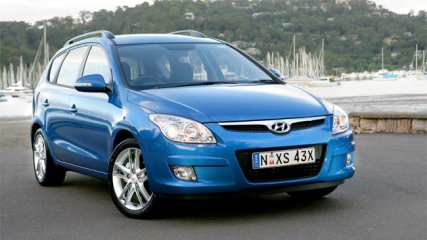
Saving money downsizing, LPG, hybrids and diesels
Read the article
By Mark Hinchliffe · 19 May 2011
The spiralling petrol prices mean fuelling a family car like a Commodore or Falcon now accounts for 2.6 per cent of average weekly earnings. But you don't have to sit back and take it in the hip pocket. These families have all taken different approaches to reducing their fuel bills.DOWNSIZINGTheir 2000 Falcon was costing the Andrew family of Brisbane a small fortune to keep running, so they decided to downsize.However, instead of buying one vehicle, they went for two Suzukis, the cutesy Swift and the three-cylinder ultra-frugal Alto.Warren, 47, says the Falcon had a 65-litre tank while the combined tanks of the Swift and Alto are 77 litres. "We now get twice as many kilometres from the same expenditure on fuel," he says. Though it has to be noted that the additional cost of registering and maintaining a second car would probably offset any real cost advantage.His wife, Karen, 43, says having two small cars is more versatile for transporting their children Jess, 12, and Emily, 10, to and from primary and secondary schools. We don't miss the Falcon in the least; maybe we will when we go on holidays," she says."It's been great. Having the two cars means we can take a child separately - one to primary and one at high school. The Swift is really cool. The Alto is a good little runabout but I enjoy driving the Swift. We drive whoever's car is at the back. Warren tends to take the Swift. I think he deliberately leaves it at the back."We fill them with petrol every couple of weeks and we can squeeze into smaller parking places. "Jess and Emily love the cars more than the Falcon. They say it's my car'."LPG Retirees John and Lesley Braggs planned to become grey nomads so they bought a 2003 BMW X5 V8 petrol a few years ago. "You wouldn't get much change out of $120 when you filled it up," he says.About eight months ago they converted it to a dual-fuel petrol/LPG system. "We were travelling around a lot going down to Melbourne and back and have plans to travel to Adelaide and Alice Springs," he says."We only put about 20 bucks a month of petrol into it because it starts up on petrol and then a few seconds later the gas kicks in. "The petrol also kicks in if you run low onLPG but we never run low and need to use it. I only ever have about a quarter of a tank of petrol, otherwise it's excess weight we don't need."He says he hasn't noticed any change in performance. "It seems to have the same amount of power as when it's running on petrol I reckon," he says. They had a 70-litre LPG tank installed where the spare tyre was located under the cargo floor so they didn't lose any luggage space. "I carry around a pressure pack in case we have a puncture," he says.The LPG installation cost about $4500 with the government rebate. "I'm really wrapped with it. There is nothing different with the performance and it's cheap," he says."LPG is currently about 70c a litre. When we first got it, it was about 40c a litre, but it's still cheap."HYBRID The Knights have discovered another benefit of their fuel-efficient Toyota Prius with the recent birth of their son, Thomas."Now that we have the baby we don't have the radio on and we can tell how quiet it is," Tanya says. "It's a bit disconcerting sometimes when it kicks into electric." Tanya and husband Stephen bought the Prius two years ago."We were in the market for a new car and wanted to be as fuel efficient and environmentally conscious as possible," she says. "We came from a Falcon with LPG so I didn't want to go to a petrol car and pay X number of hundred dollars to fill it."We found the LPG wasn't particularly fuel efficient. It guzzled the fuel, but it was half the price. "Now I fill up maybe once every three to four weeks on a 60km daily round trip to school and home. "With highway driving, I can get over 1000km on one 40-litre tank of fuel which is amazing. We're really happy with it and wouldn't go to a petrol-only car ever."Mrs Knight says the Prius is a bit quirky in design and function. "But once you get used to it, it's interesting," she says. "People are astonished. They say the car has turned off."She also defends the Prius as a family car. "It's actually a reasonable size car. We get the baby capsule in and there is plenty of space for other people, she says. "My dad used to run taxis and many in the industry are going to hybrid cars."DIESEL The Webbs were a bit skeptical about diesels when they went to test the Hyundai i30cw CRDi wagon. But Adam and Katie Webb of Brisbane were pleasantly surprised. "My only experience of a diesel was my mate's old diesel HiLux which chugs and smokes," says Adam. "I had done some research and knew a bit about the new turbo diesels but my wife was especially concerned about the noise and smoke of them."However, when I took it for a test drive I was surprised. For a 1.6 (litre engine) when you put your foot down it really takes off. "It's really quiet. Especially on the highway you hardly notice you are driving a diesel. "There's still a bit of noise when you start it up. You know it's a diesel, but it's a lot smoother and quieter than we thought."The Webbs traded in their 1996 Magna wagon three months ago. "We pretty much downgraded in size, but there is still plenty of space," he says. "Me, my wife and the two kids all fit in quite well and when you have a couple of kids their stuff takes up a lot of boot space."The burning question is fuel economy. "We bought it just for the fuel efficiency," he says. "I'm not too sure on the actual economy figures but we drove about 600km to Rainbow Beach and back last weekend and there's still about a quarter of a tank left."He rejected concerns about limited and dirty diesel bowsers. "My wife drives it more than I do and she hasn't had any problems finding a boswer," he says. "Hyundai supply 10 disposable gloves with the car to use when filling up, but we've never used them."
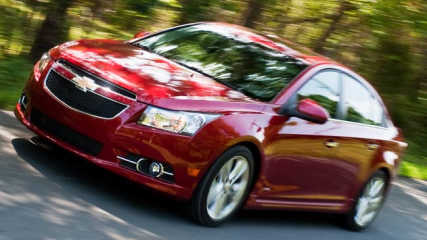
Cars under $30,000 arriving in 2011
Read the article
By Paul Pottinger · 04 Jan 2011
Carsguide has sorted the genuinely new from the merely tarted up, the noteworthy from the non-entities and the relevant from the rest so families car buyers can chart the year ahead with certainty.
A sizeable proportion of 2011's new car action comes in the comely shape of things like Suzuki's Swift. Due in February, the new Swift is slightly bigger and heavier, but runs leaner and cleaner it's also likely to be slightly more expensive from around $16,500.
If the work Kia's put in on its recent product is any guide, their new Rio will give the class leaders something to think about when it lobs mid-year with its six-speed transmissions and transformed fit and finish.
Hyundai's Accent-replacing i25 is here shortly after. Hyundai's on a roll with the i35 sedan, i40 wagon and possibility of a hybrid i45 sedan.
The Daewoo Aveo (as the new Holden Barina is elsewhere known) gets here in five door form late in the piece, a much-needed replacement for the thoroughly outclassed current car. The new version of the car that once made the Barina badge worth buying, Opel's Corsa, lobs in the third quarter as the German company roll outs locally.
Holden's Cruze sedan starts local production shortly, with the five door joining it later in the year. General Motors has two more shots in its locker with the new version of Opel's much-loved Astra making a welcome return alongside the bigger Insignia sedan and possibly wagon. Ford's riposte, the handsome and crucial new Focus, arrives some time later.
The Mazda6 will gain the Sky-D direct injection turbo diesel that will challnge the Camry Hybrid for fuel economy, married to a new six-speed automatic transmission. Be still our beating hearts - an "all-new" Toyota Camry is along later in the year. And if not new per se, the market leading Toyota Yaris comes in for upgrades in the second half of the year.

Suzuki Swift 2011 set for success
Read the article
By Paul Gover · 17 Jun 2010
But size is not everything in the small-car conflict and the next Swift, revealed for the first time in official pictures from Hungary, looks much like the current car. It will also have similar suspension and engines, although Australia will not get the three-door Swift sold in Australia and local supplies will not arrive until midway through next year. And there is likely to be a price rise.
Few details have yet emerged on the Swift, but already Suzuki Australia is bullish about the car's chances following a Carsguide Car of the Year win for its predecessor and early sales success for its latest mid-sized Kizashi.
"Yes, the Swift is an evolution, not a revolution. But when you see the car it is bolder and stronger than the current car," says Tony Devers, general manager of Suzuki Australia. "It's more fuel efficient, has more performance, and a higher-quality finish inside. It's a more sporty drive. The Swift has always been good, but it's more than a light car now."
The car is nearly 100 millimetres longer and slightly wider, promising more cabin space. The body is also more rigid with more high-strength steel, which points to a better crash-safety performance. The Swift reveal comes from Esztergom in Hungary, where the new Swift is built for Europe at the Magyar Suzuki Corporation factory. There will be another preview at the Paris Motor Show in October and Australian supplies will come from Suzuki's plant at Sagara in Japan.
Devers is reluctant to go into detail on the Swift, but definitely rules out a three-door car - "We will continue with the five-door here" - but pumps up the improvements.
"It's bigger and that's important. The interior and the engine technology are substantially different, and better," he says. "We'll probably have a bigger-capacity engine than Europe, a 1.4 or 1.5 with more performance than it has now, and I'd like to think we will be able to get it with a diesel engine as well."
But he admits the improvements are likely to bump the bottom line. "Yes, it's probably going to be a bit more expensive," he says.
The exact timing for the new Swift is still being set but it will not come in 2010. "It will be in the first half of next year. That's about all we can say for now," Devers says.
The new Swift is likely to join a Thai push into Australia from 2012. That's the year the Japanese maker joins many of its rivals - led by Toyota and Honda - with a factory in Thailand to shortcut import restrictions and tariff barriers in some Asian countries. It also gives Suzuki a free-trade agreement boost as it looks to lift its sales in Australia.
"Once the Thai factory comes online we will get the Swift and probably also the Splash," says Tony Devers. "It's a brand-new factory. Quality will be exactly the same as cars built in Japan. We will have more options available for us. Our plan, with the free- trade agreement, is to source as much product from there as we can".
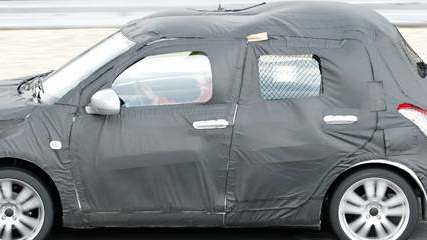
Suzuki Swift spy shot
Read the article
By Paul Gover · 22 Apr 2010
The Japanese baby will be renewed at the Geneva Motor Show in September, with Australian sales expected in the first quarter of 2011. The Swift follows the breakthrough new Kizashi, which comes in a full size larger into a hotbed of global action including the pace-setter Volkswagen Golf, and has a job that is just as tough.It must build on the success of the current Swift, which was the first Euro-focussed design from Suzuki and won the Carsguide Car of the Year award when it landed in Australia. Carparazzi sources in Europe say the look of the new Swift is similar to the current car, with a rounded nose and a very short rear overhang, but with a slightly larger body and more space inside.It is caught during testing at the Nurburgring racetrack which could be particularly significant, with the likelihood of an all-wheel drive chassis for the first time. The basic Swift will continue with front-wheel drive - as well as small-capacity petrol and diesel engine - but there is also a strong likelihood of an all-wheel drive performance model picking up parts already used in the SX4 sedan and hatch.There is even a chance Suzuki could return to the World Rally Championship with the new Swift, using a turbocharged engine to create a rival to the Subaru WRX and Lancer Evo. Not surprisingly, Suzuki is also working on a Swift hybrid which could join the range as early as 2011 but more likely in 2012.

Suzuki Swift Sports a chance
Read the article
By Chris Riley · 13 Sep 2006
The Swift Sport, unveiled to Australian media in Japan this week, may not carry the famous GTi badge (it no longer has rights to the name) but it has the firepower to outgun its predecessor.
Powered by a high revving 1.6-litre twin cam four cylinder engine, the four-door hatch is quicker from 0 to 100km/h than GTi and runs rings around it when it comes to handling.
What it lacks is the raw edge that made the original GTi so much fun to drive, because like the off road Vitara it didn't have to bow to anyone.
In this critical area, we would have liked to have seen a larger, more powerful engine, but hey . . . the Liana started life with a 1.6 didn't it?
To create the engine, Suzuki engineers have increased the stroke and upped the compression of the donor 1.5-litre unit.
It gets a new block, new inlet and exhaust camshafts, new pistons and rings, connecting rods, crankshaft, larger capacity sports muffler, oil cooler, intake and exhaust manifolds and an electronic throttle body.
The result is a compact engine that delivers 92kW of power at 6800rpm and 148Nm of torque at 4800rpm.
This compares with the standard car's 74kW and 133Nm - a significant increase.
Swift Sport is due to go on sale at the end of September and looks set to build on the momentum of a car that has become a runaway success since launch in 2004.
To go with the extra power, the car's chassis has been strengthened with extra cross members, a close ratio, short throw five-speed manual box has been added, along with firmer damping and of course bigger, beefier brakes.
Cosmetic changes have also been made, with the addition of a deeper front air dam, black WRX-style side skirts and small rear wing plus a new rear bumper that incorporates twin exhaust outlets.
The car sits on 16 inch alloys with 195/50 series rubber, four-wheel anti-lock disc brakes and six airbags.
It looks hot, especially in bright yellow and Suzuki claims the Sport is good for 8.29 seconds for the dash from 0 to 100km/h, with a top speed of about 200km/h.
You pay a small penalty for this extra performance as the car takes 98 strength premium unleaded, but it still manages to sip the stuff at the same 7.5 litres/100km, with a 43-litre fuel tank.
We got to put the Swift Sport through its paces at Suzuki's proving ground at Hamamatsu. Weighing in at 1100kg, and with a power to weight ratio of 12.0kg to the kilowatt, it goes hard but lacks torque down low.
This is particularly evident from a standing start as well as when exiting corners, but wind it up and it's a ball to drive.
Our confidence in the Sport's handling grew with each lap of the proving ground as we pushed harder and harder through corners.
Pour it on and the car remains composed and manageable even at the extreme limits of adhesion.
The rasp from the twin exhausts sounds the part and inside there are some nice touches too, including sports seats (we're told they're Recaros), three-spoke leather stitched sports wheel, silver look gear knob and stainless steel pedals.
In terms of performance, the original GTi weighed just 750kg and, with a 74.3kW motor, boasted a power to weight of just 10.1kg/kW (0-100km/h took 8.6 seconds).
It wasn't forced to labour under the additional weight of the safety equipment that is imposed on modern vehicles.
Launched in 1986 the original GTi roared out of the gates, but was plagued by dreadful torque steer and could be a real handful in the wet.
In comparison, the Swift Sport is much more refined and desirable car.
At $23,990 it comes fully equipped with few direct competitors.
Suzuki benchmarked the car against the Mini Cooper and Citroen's C2, while Ford's Fiesta Zetec could also be considered a rival.
None provide the size, interior space and four-door utility of the Swift.
Standard equipment includes air conditioning, power ancillaries, steering wheel audio and fully featured trip computer.
But there's no spare wheel and no room for one either - just a re-inflation kit.
Whether the Swift Sport is indeed the successor to the GTi that Suzuki has been looking for remains to be seen.
The car has not been released in the United States, but like us, the Canadians have expressed interest in bigger engines too.
The Suzuki Sport certainly looks the goods and handles exceptionally well, but the extra $6000 could stretch the budget.
With no turbo, however, it remains within reach of P plate drivers.
Chris Riley is a roadtester on the CARSguide team. His work appears here and in the 96 News Limited Community Newspapers across Australia – including the Cumberland Newspaper Group, Leader Newspaper Group, Quest Newspaper Group, Messenger Newspaper Group, Gold Coast Sun, Townsville Sun.





